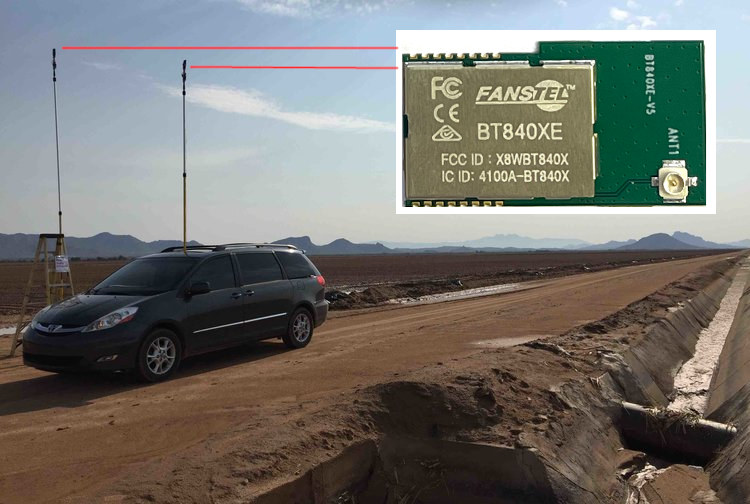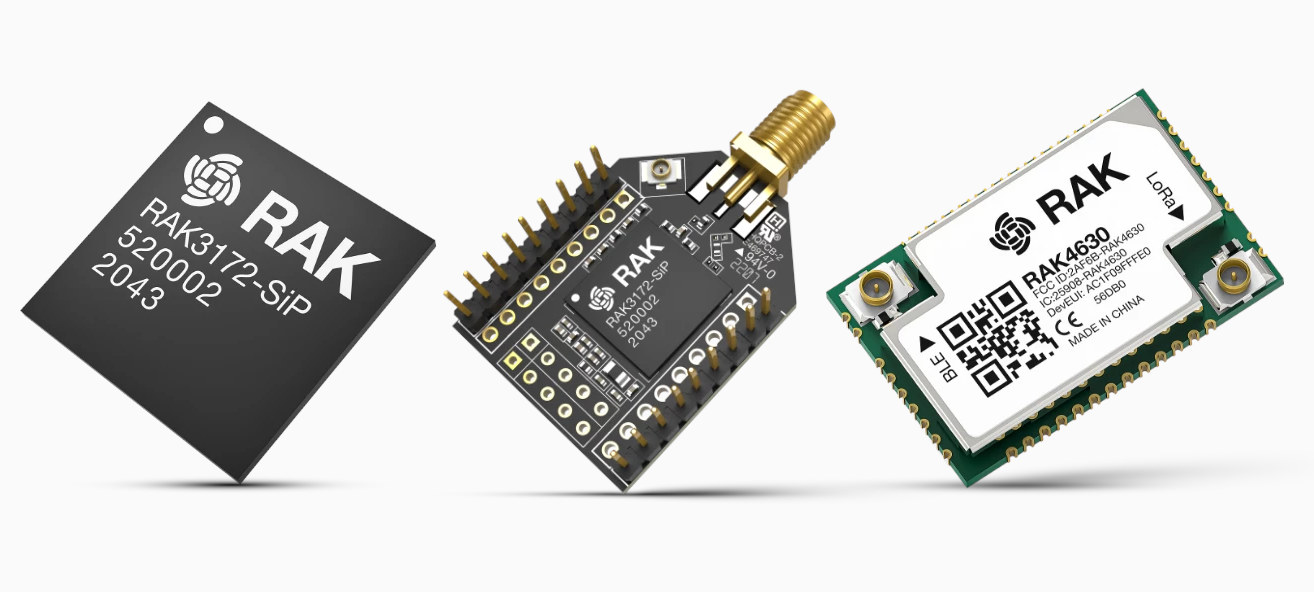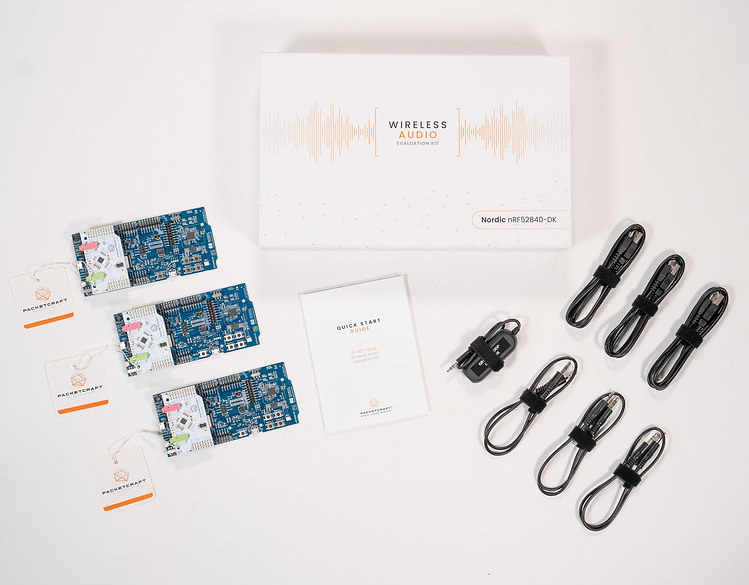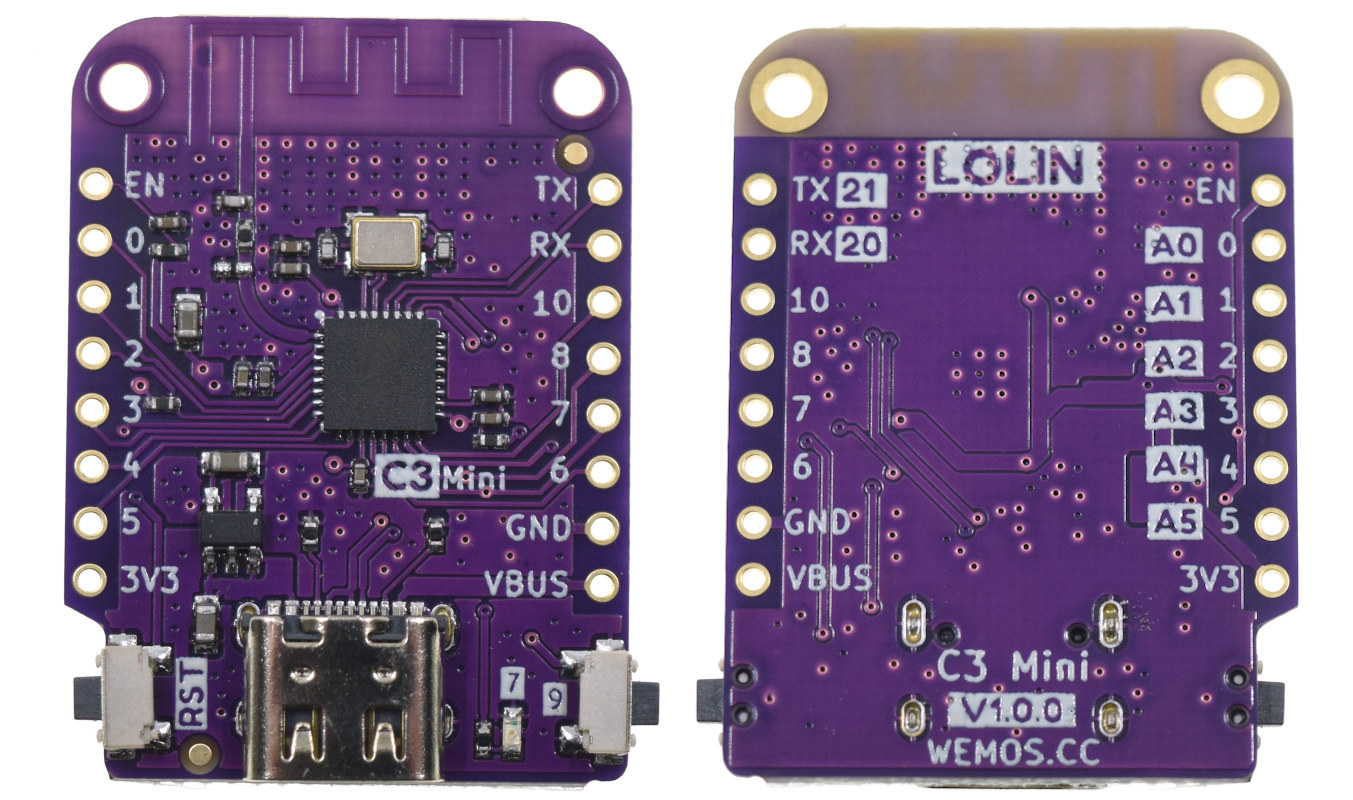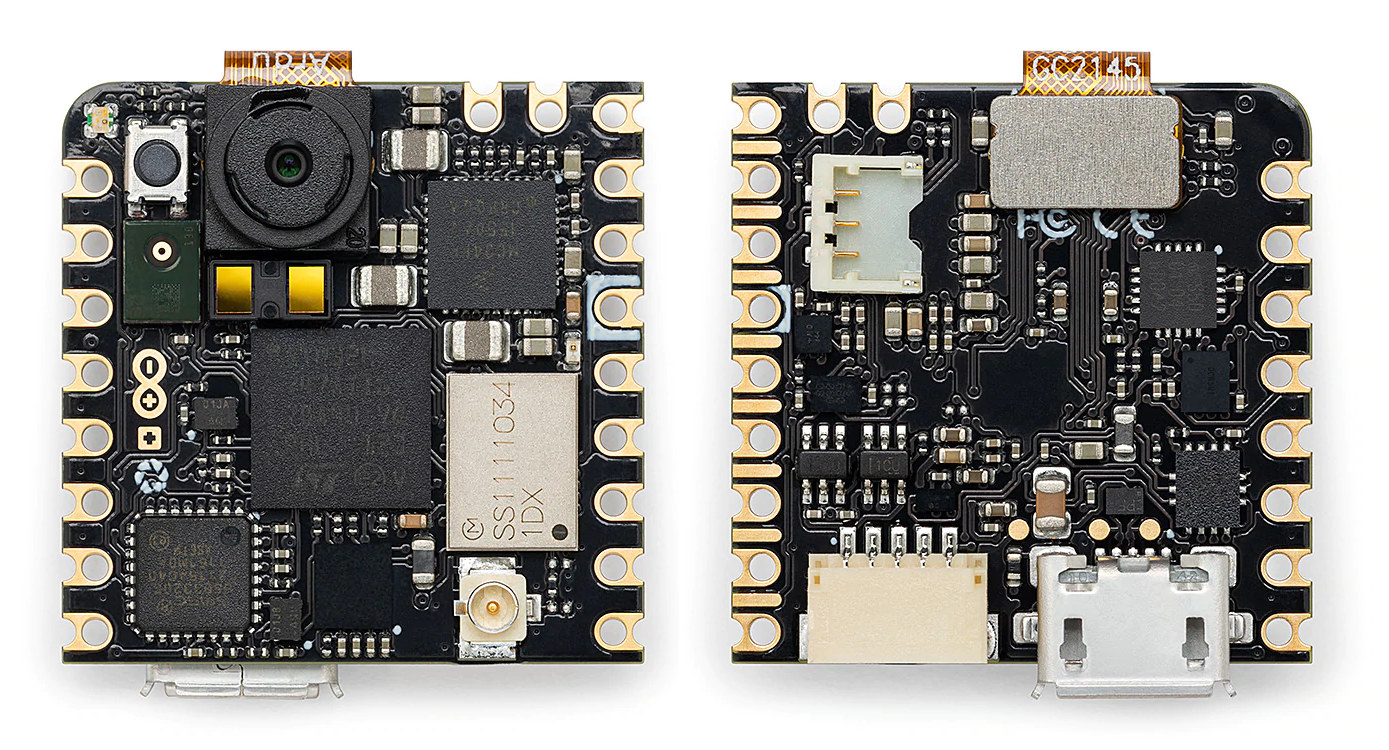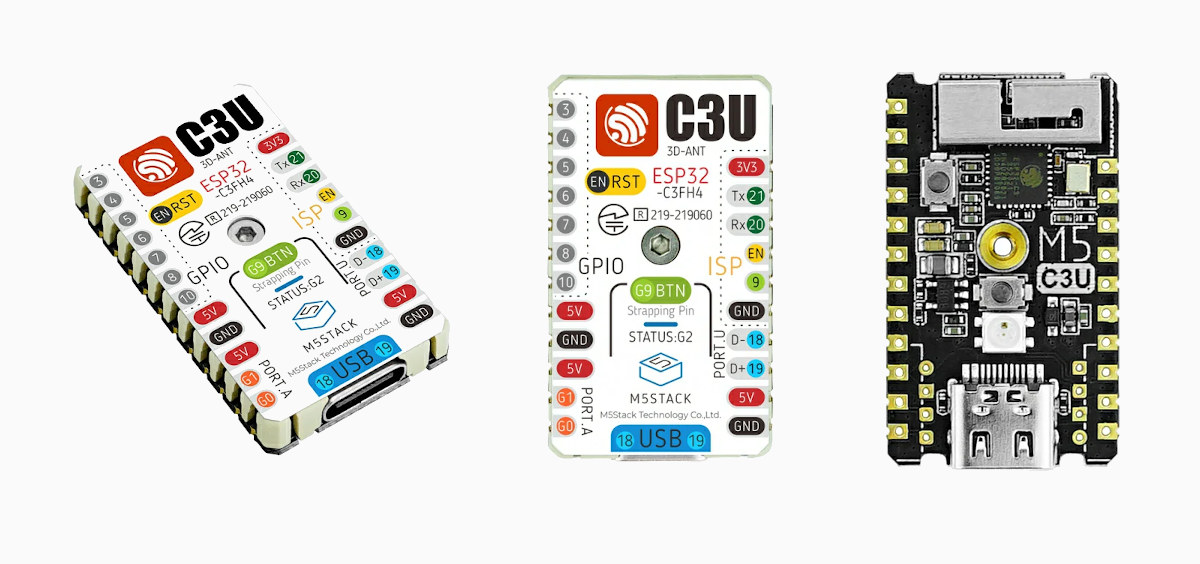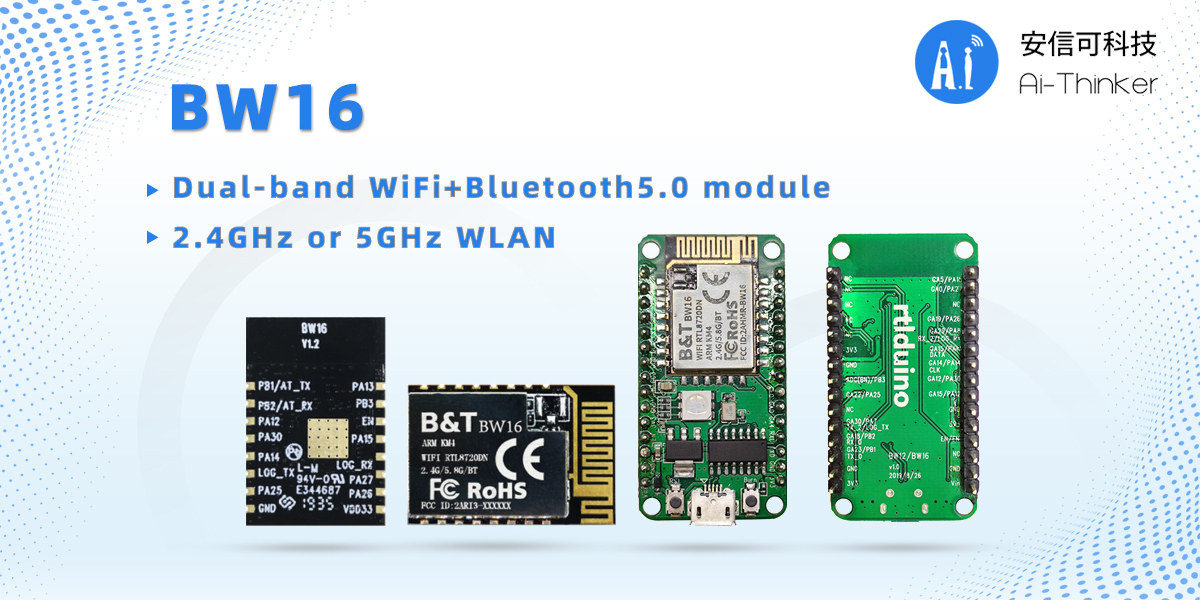Fanstel BT840XE is an nRF52840 Bluetooth 5.2 LE module with a power amplifier designed for transmission at over 4500 meters, and some deployments with two BT840XE modules and 0Dbi antennas even reach over 10 km. At home, I can use my Bluetooth headset about 6 to 8 meters from my phone before the audio starts cutting, and most Bluetooth devices have an advertised 10-meter range, although Bluetooth class 2 devices could transmit up to 100 meters away. But with Bluetooth 5, the wireless standard improvement meant it was not possible to get four times the range, and/or some further extended the range of their hardware with a power amplifier as we’ve seen with the RFCat N32 board a few years ago. Last week, I got contacted by a company called RF Star about a Texas Instruments CC2652P multi-protocol mobile with PA (power amplifier) that could achieve a range of 500 […]
RAKwireless adds more Wisduo and Wisblock modules, launches WisToolBox configuration tool for IoT devices
RAKwireless have launched several Wisduo wireless modules, a dozen of Wisblock modules for IoT prototyping, updated WisDM, WisGateOS, and RUI3 software, and introduced WisToolBox mobile/desktop configuration tool for IoT devices as part of their spring launch 2022 even entitled “Empowering the Innovators: Making IoT your own”. Three new Wisduo modules RAK3172-SIP WisDuo SIP based on STM32WLE5 Wireless SoC with LoRa connectivity. Compared to the original RAK3172, it offers more IO pins, integrates a TCXO, and comes in a smaller size. The module supports LoRa P2P and complies with Class A, B, & C of LoRaWAN 1.0.3 specifications. Cost: $5.99. WisDuo RAK3272-SiP – That’s a breakout board for the RAK3172-SiP System-in-a-Package module for LoRaWAN and allows easy access to all pins via 2.54mm pitch headers. RAK4630 WisDuo Stamp Module – This module supports both LoRa/LoRaWAN and BLE 5.0, and comes with RUI V3 (RUI3) firmware. It can be deployed as an […]
Bluetooth LE audio evaluation kit supports nRF52840 Bluetooth Low Energy SoC
Software company Packetcraft has announced the availability of its Bluetooth LE audio evaluation kit for the Nordic Semiconductor nRF52840 Bluetooth Low Energy SoC used to let engineers evaluate the technology and develop Bluetooth LE Audio applications. Bluetooth LE audio was first announced in January 2020 together with the LC3 audio codec, and promised to deliver a much longer battery life for your Bluetooth headphone or battery-operated speaker, as well as support for multi-stream and broadcast audio. But it’s taken some time before being adopted in chips like Qualcomm QCC305x/QCC3056 or FastConnect 7800, as well as operating systems with, for instance, Android 12 being the first version of Android with LE audio support. The kit is comprised of three Nordic Semi nRF52840-DK boards each fitted with a Packetcraft audio interface board (AIB) equipped with two 3.5mm audio jacks for microphone and speaker, plus a ground loop isolator, three 3.5mm audio cables […]
LOLIN C3 Mini ESP32-C3 board is compatible with Wemos D1 Mini shields
Wemos LOLIN C3 Mini board is powered by Espressif ESP32-C3 WiFi and BLE RISC-V microcontroller and follows the company’s earlier Wemos D1 Mini (ESP8266) and LOLIN S2 Mini (ESP32-S2) form factor for compatibility with the original stackable Wemos D1 shields. The tiny board comes with 4MB flash embedded in the ESP32-C3 chip, a USB Type-C connector, reset and user buttons, as well as sixteen through holes for GPIOs, VBUS, 3.3V, and ground signals. LOLIN C3 Mini V1.0.0 specifications: SoC – Espressif Systems ESP32-C3FH4 single-core 32-bit RISC-V (RV32IMC) microcontroller up to 160 MHz with 400 KB SRAM, 4MB Flash Connectivity – 2.4 GHz WiFi 4 and Bluetooth 5.0 LE (in SoC) Expansion headers – 2x 8-pin headers with up to 12x GPIO, ADC, I2C, SPI, UART (3.3V I/O voltage) USB – 1x Type-C USB for 5V power and programming Misc – Reset button and button 0 also used to enter Device […]
Arduino Nicla Vision – A tiny STM32H7 board with 2MP camera, WiFi & Bluetooth LE, sensors
Arduino Nicla Vision is an ultra-compact (~2.3×2.3 cm) board powered by an STMicro STM32H7 dual-core Cortex-M7/M4 microcontroller, and equipped with a 2MP camera, a WiFi & Bluetooth LE module, and a few sensors. Those features make the board suitable for machine vision and edge computing applications such as asset tracking, image detection, object recognition, and predictive maintenance. For instance, image detection, facial recognition, automated optical inspection, vehicle plate reading, or gesture recognition can be added to projects, either using Nicla Vision as a standalone board or in combination with Portenta or MKR boards. Arduino Nicla Vision specifications: Microcontrollers – STMicro STM32H757AII6 dual-core MCU with Arm Cortex M7 @ 480MHz, Cortex-M4 @ 240MHz, 2 MB flash, 1MB RAM Storage – 16MB QSPI flash Connectivity – 2.4GHz WiFi 802.11b/g/n up to 65 Mbps and Bluetooth 5.1 BR/EDR/LE via Murata 1DX module Camera – 2MP GC2145 color camera. USB – Micro USB port […]
M5Stamp C3U IoT module relies on ESP32-C3’s own USB interface for firmware programming
M5Stamp C3U is an update of the M5Stamp C3 RISC-V IoT module with heat-resistant cover, support for WiFi 4 and Bluetooth 5.0, that does without CH9102 USB to TTL chip, relying instead on the internal USB interface of ESP32-C3 processor to handle serial programming of the firmware, and gaining on extra GPIO pin in the process. While several ESP32 processors come with a built-in USB interface, many boards still use an external USB to TTL chip such as CH340 or CP2102 to handle the serial interface used for debugging and flashing the firmware likely because of limitations when using ESP32-C3’s USB serial/JTAG controller console, but M5Stack probably considered those to be workable, and the small cost-saving beneficial. M5Stamp C3U specifications: WiSoC – ESP32-C3FH4 32-bit single-core RISC-V processor @ up to 160 MHz, with 384KB ROM, 400KB SRAM, 8KB RTC SRAM, 4MB embedded flash, WiFi and Bluetooth Connectivity 2.4 GHz WiFi […]
Silicon Witchery S1 module combines nRF52811 Bluetooth SoC with Lattice iCE40 FPGA
Sweden-based Silicon Witchery S1 is a tiny module combining Nordic Semi nRF52811 Bluetooth LE SoC with Lattice Semi iCE40 FPGA designed for battery-powered applications leveraging DSP and machine learning (ML) at the edge. The S1 module features just four key components in a tiny 11.5 x 6 mm form factor and targets applications requiring “demanding” algorithms while consuming as little energy as possible. Silicon Witchery S1 module specifications: MCU – Nordic Semi nRF52811 Arm Cortex-M4 MCU @ 64 MHz with Bluetooth 5.2 support including Long Range, Thread support. FPGA – Lattice Semi iCE40 FPGA with 5k LUT and DSP blocks. Storage – 32 Mbit flash storage. Integrated antenna, passives, and crystals. I/Os – 20x castellated holes with 8x FPGA IO include I3C, I2C, SPI, and USB. 2x nRF GPIO pins with ADC and low power wake. SWD pins for debugging Power Supply Lithium battery charging and monitoring. 3x adjustable Vout […]
Ai-Thinker BW16 is a dual-band WiFi & Bluetooth 5.0 IoT module (Sponsored)
Many users prefer the ESP32 when implementing WiFi & Bluetooth into their IoT projects. But Ai-Thinker BW16 offers dual-band WiFi 4 & Bluetooth 5.0 connectivity through Realtek’s RTL8720DN chipset which may provide more reliable connectivity where the 2.4 GHz band is crowded. The module integrates an Arm Cortex-M4F compatible high-performance MCU, an Arm Cortex-M0 compatible low power MCU, WiFI 802.11 a/b/g/n, MAC, Bluetooth and RF baseband, and provides a set of configurable GPIO ports to control peripheral devices. BW16 module One significant difference between BW16 and ESP32 module is that it has two serial port interfaces, so attention should be paid to the wiring of the UART interfaces. The following diagram shows the two serial interfaces of the BW16 module. One of the module serial interfaces is used to send and receive AT commands to control connectivity from a host processor or microcontroller, while the other serial port is used […]


